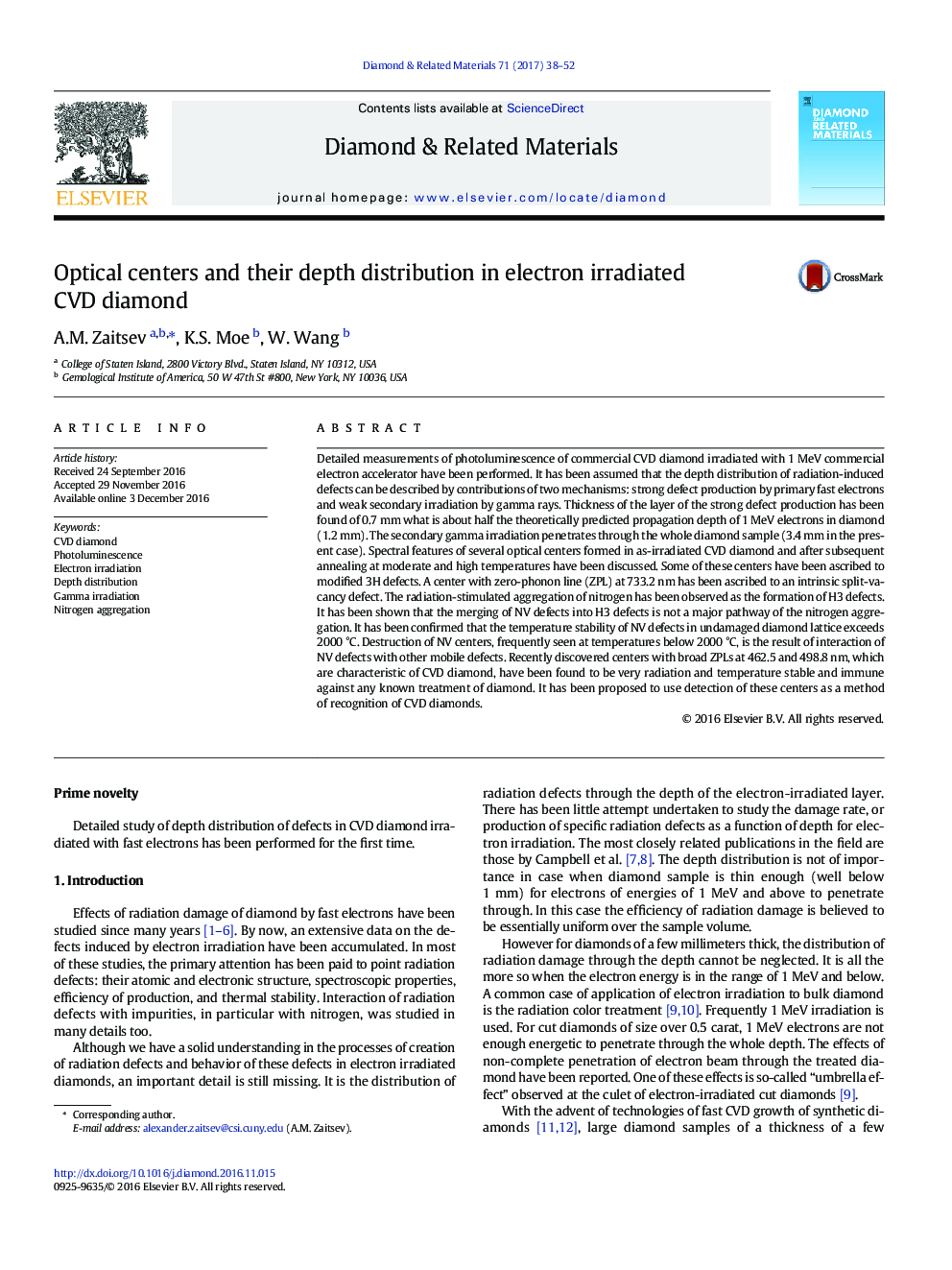| کد مقاله | کد نشریه | سال انتشار | مقاله انگلیسی | نسخه تمام متن |
|---|---|---|---|---|
| 5000537 | 1460760 | 2017 | 15 صفحه PDF | دانلود رایگان |
- In electron irradiated diamond, about 0.1% of defects is produced by gamma rays.
- Recombination of unstable defects considerably shortens radiation damaged layer.
- Low temperature stability of NV defects is due to their interaction with other defects.
- Direct formation of H3 defects of mobile NV defects is not probable.
- Optical centers with ZPLs 462.5/498.8Â nm are a signature of commercial CVD diamonds.
Detailed measurements of photoluminescence of commercial CVD diamond irradiated with 1 MeV commercial electron accelerator have been performed. It has been assumed that the depth distribution of radiation-induced defects can be described by contributions of two mechanisms: strong defect production by primary fast electrons and weak secondary irradiation by gamma rays. Thickness of the layer of the strong defect production has been found of 0.7 mm what is about half the theoretically predicted propagation depth of 1 MeV electrons in diamond (1.2 mm). The secondary gamma irradiation penetrates through the whole diamond sample (3.4 mm in the present case). Spectral features of several optical centers formed in as-irradiated CVD diamond and after subsequent annealing at moderate and high temperatures have been discussed. Some of these centers have been ascribed to modified 3H defects. A center with zero-phonon line (ZPL) at 733.2 nm has been ascribed to an intrinsic split-vacancy defect. The radiation-stimulated aggregation of nitrogen has been observed as the formation of H3 defects. It has been shown that the merging of NV defects into H3 defects is not a major pathway of the nitrogen aggregation. It has been confirmed that the temperature stability of NV defects in undamaged diamond lattice exceeds 2000 °C. Destruction of NV centers, frequently seen at temperatures below 2000 °C, is the result of interaction of NV defects with other mobile defects. Recently discovered centers with broad ZPLs at 462.5 and 498.8 nm, which are characteristic of CVD diamond, have been found to be very radiation and temperature stable and immune against any known treatment of diamond. It has been proposed to use detection of these centers as a method of recognition of CVD diamonds.
232
Journal: Diamond and Related Materials - Volume 71, January 2017, Pages 38-52
